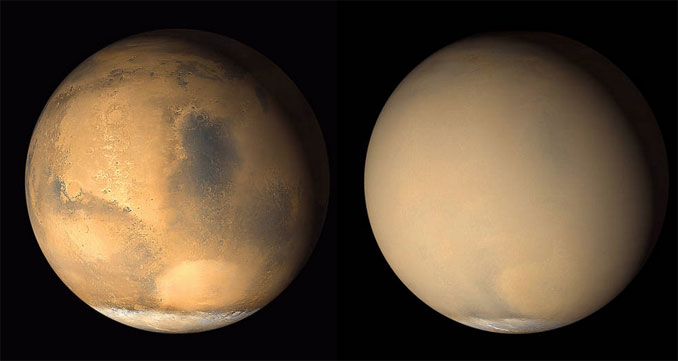
A new study suggests periodic global dust storms on Mars play a role in the ongoing escape of gas from the top of the martian atmosphere, a process that helped transform the red planet from a wetter, warmer world into the cold, arid planet seen today.
Nicholas Heavens of Hampton University in Virginia used data from the Mars Reconnaissance Orbiter that was collected during a 2007 dust storm to show a connection between water vapor in Mars’ middle atmosphere and the loss of hydrogen from extreme upper altitudes.
“We found there’s an increase in water vapor in the middle atmosphere in connection with dust storms,” he said. “Water vapor is carried up with the same air mass rising with the dust.”
David Kass of NASA’s Jet Propulsion Laboratory in Pasadena, California, said if another global dust storm kicks up this year – the storm season begins this summer and will last into early 2019 — researchers will be well positioned to study it in unprecedented detail with multiple satellites.
The Mars Climate Sounder instrument on the MRO spacecraft can directly detect ice particles and dust in the martian atmosphere and can indirectly sense water vapor concentrations. The instrument detected slight increases in middle atmosphere water vapor during smaller, regional dust storms but a sharp rise during the global storm in 2007.
Researchers initially believed the loss of hydrogen from the top of the atmosphere reflected a steady change due to the solar wind. But data from NASA’s MAVEN orbiter and the Mars Express indicate a seasonal pattern. Heavens and co-authors of a paper in Nature Astronomy believe global dust storms may be a factor in that phenomenon.



